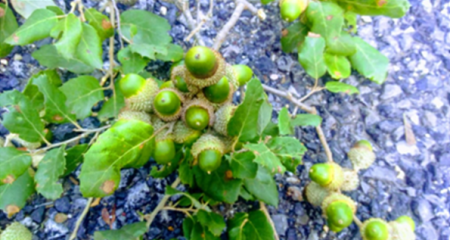
Objective:
The cork oak forest suffers from serious problems of natural regeneration following anthropic action and overgrazing. As a result, we are witnessing continuous aging and disappearance of the oak grove. The object of the investigation is to study the variation of the size of the acorns of Quercus suber collected from different sites according to an altitudinal gradient in Kroumirie (North-West of Tunisia) in order to make the right choice of acorns for a plantation successful and adapted from cork oak.
Context:
As part of the study of the phenology of cork oak (bud burst, flowering, fruiting, litter fall) in Northwest Tunisia and the impact of climate change (increase in temperature and decrease in precipitation) on these different phenophases, their sensitivity to prolonged dryness, frost, parasitic attacks. Because it determines the length of the growing season and the role it plays in both the carbon budget and the water balance, its study is essential
Contacts:
Kaouthar Ben Yahia, kaoutherbenyahia01@gmail.com, http://www.inrgref.agrinet.tn
Sarra Ghariani , sarra.ghariani@gmail.com, http://www.inrgref.agrinet.tn
Ezzeddine Sâadaoui , saad_ezz@yahoo.fr,http://www.inrgref.agrinet.tn
Further information:
Natasa P. Nikolié, SasaS.Orlovié (2002): Genotypic variability of morphological characteristics of English oak (Quercusrobur L.) acorn. Proceeding for Natural Sciences, MaticaSrpska Novi Sad, N°102, 53-58.
Bonito A., Varone L. and Gratani L. (2011): Relationship between acorn size and seedling morphological and physiological traits of Quercus ilex L. from different climate. Photosynthetica 49(1): 75-86.
Gea-Izquierdo G., Canellas I. and Montero G. (2006): Acorn production in Spanish holm oak woodlands. Invest Agrar: Sist Recur For 15(3), 339-354.
Rodriguez-Estevez V., Garcia A., Gomez AG. (2009): Characteristics of the acorns selected by free range Iberian Pigs during the montanera season. Livestock Science 122, 169-176.
Wenhui Shi, Pedro Villar-Salvador, Guolei Li, Xiaoxu (2019): Acorn size is more important than nursery fertilization for outplanting performance of Quercusvariabilis container seedlings. Annals of Forest Sciences,2-12.12.A